Arithmetic Operators
These procedures implement basic arithmetic operations. The binary operators (add, subtract, multiply, and divide) include operations between two vectors or between a vector and a scalar. In the former case, each element of the output vector is the result of the operation on the corresponding elements of the input vectors. In the second case, each element of the output vector represents the result of the operation between the corresponding element of the input vector and the same scalar.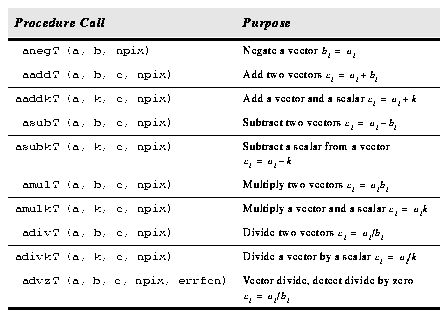
Generated with CERN WebMaker
Table 2.48: Arithmetic Functions.
Each of these procedures is implemented for the following data types: short, int, long, real, double, and complex. To use the appropriate data type, replace T with the representative of the data type name, amulr() or aaddki(), for example. Most of these are the first character of the data type, except for complex, whose representative character is x. The last procedure, advzT(), implements dividing vectors, but upon dividing by zero it calls errfcn(), supplied by the application as an external function. Bitwise Boolean operators
These procedures perform boolean operations on integer arrays, returning the same type result. The resulting vector is the result of the boolean operation on each bit of each element of the arrays.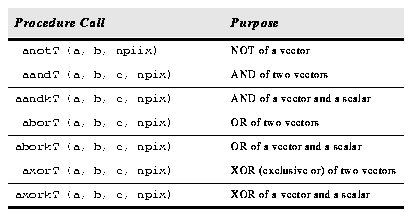
Table 2.49: Bitwise Boolean Operators.
All of the above procedures are implemented only for the integer data types: short, int, and long. Logical Comparison
These procedures return an int array containing the result of the logical comparison between elements of the input vectors. If the result of the comparison is true, the value in the vector is one, otherwise, it is zero.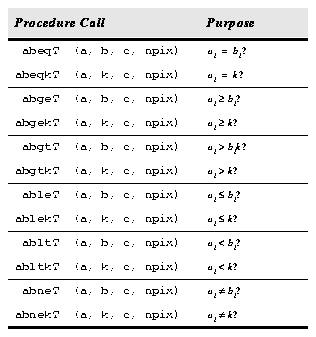
Table 2.50: Logical Comparison Functions.
All of the above are implemented for the range of SPP data types: char, short, int, long, real, double, and complex. Note, however, that the output vector, c is always an int array. Fundamental Array Operators
These procedures implement various basic array operations. The achtTT() procedure is unique in that the input and output vectors are of different data types. It requires two data type specifiers (t) for the input and output vectors.
Table 2.51: Fundamental Array Operators.
All of the above are implemented for the full range of SPP data types: char, short, int, long, real, double, and complex. In addition, achTT() is implemented for unsigned byte b and unsigned short u types. These are used primarily in low-level image I/O (imio) code. aclrT() is also implemented for byte. Algebraic Operators
These procedures implement various functions. The log and square root functions include an external function passed to the procedure that sets the returned value in the case of an invalid function result such as xd6 -1. 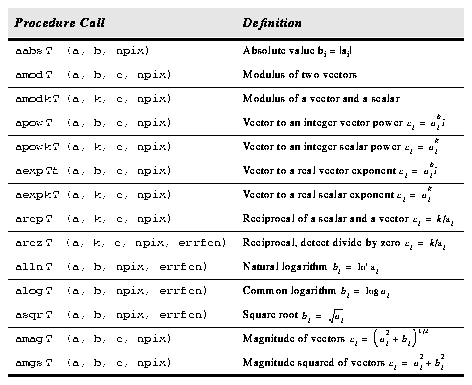
Table 2.52: Algebraic Operators.
All of these procedures are implemented for the data types: short, int, long, real, double, and complex, except the modulus functions amodT() and amodkT(), which are not implemented for complex. Complex Operators
These procedures involve complex operators, but involve not only complex arguments. 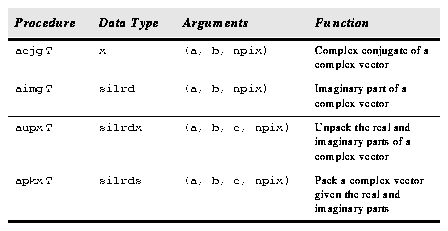
Table 2.53: Complex Operators.
acjgT() is implemented only for complex arrays. The first argument to aimgT() and aupxT() must be a complex array. The last argument to aupxT() must be a complex array. Fourier Transforms
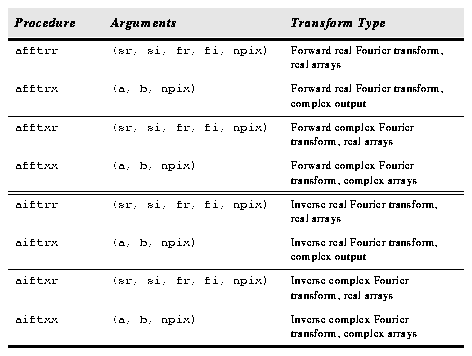
Table 2.54: Fourier Transforms.
The transform may be performed in place. The size of the arrays must be a power of two. Transformations
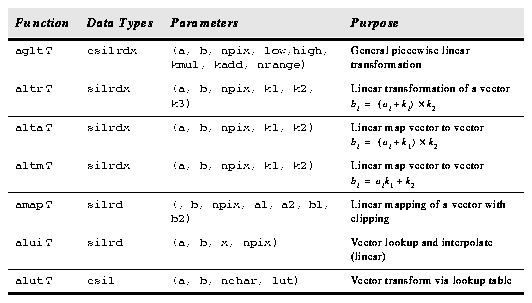
Table 2.55: Transformations.
Miscellaneous Procedures
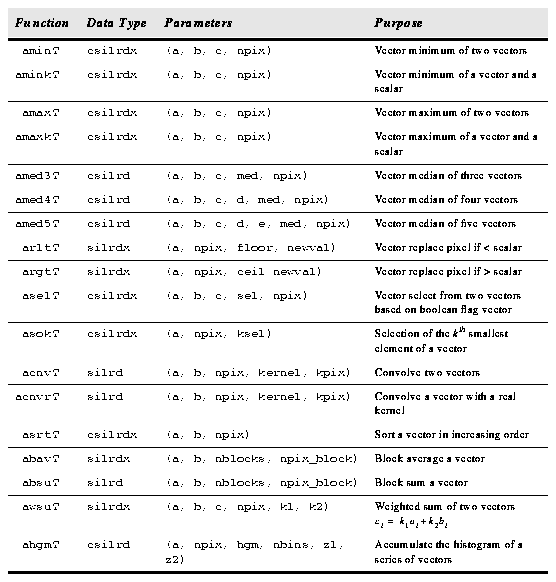
Table 2.56: Miscellaneous Procedures.
Scalar Results
These procedures return a scalar value from computation upon a vector. In most cases, the data type of the function, vector or vectors, and the returned value must match. Exceptions are aravt() and awvgt(), in which the returned value is the number of points remaining in the sample after rejection.
Table 2.57: Scalar Results.




